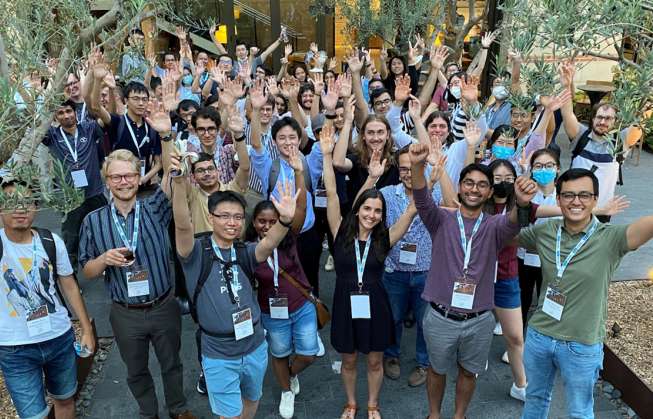
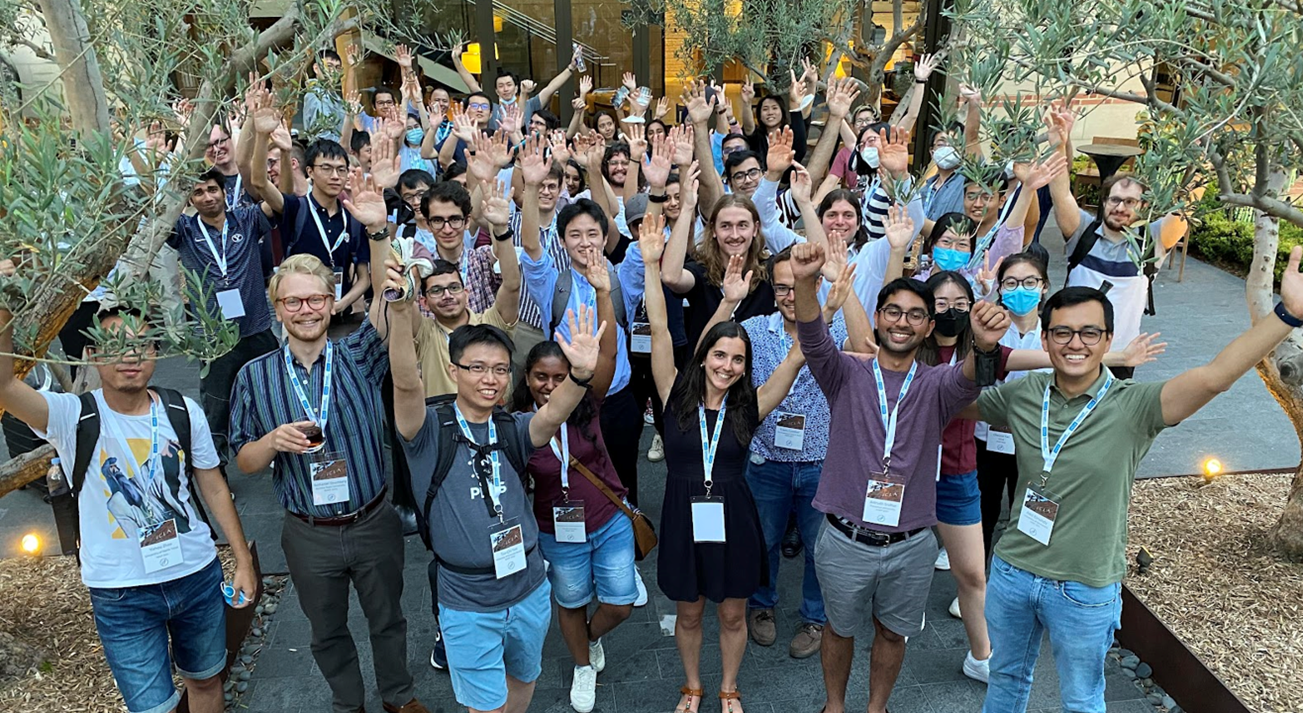
Information theory students from across North America arrived on Monday August 15, staying in UCLA student housing. The excitement of the attendees at the 2022 North American School of Information Theory to finally enjoy a fully in-person event after the pandemic was immediately apparent. The event was planned with all outdoor dining and masks required in the auditorium to ensure safe interactions.
Tuesday featured a back-to back pair of powerhouse tutorials. Professor Christina Fragouli, current President of the Information Theory Society, revealed the fundamental principles testing and recent advances in group testing including a fun result where relaxation of an integer problem to a linear program still yields the exact solution and how adapting test strategies to community structure or previous test results can dramatically improve performance. In Professor Urbashi Mitra’s tutorial “Learning as you go and as fast as you can,” attendees discovered how the principles of active hypothesis testing can be applied “in the wild” to guide from which sensors to collect data as understanding evolves in a dynamic and resource constrained environment. After those talks, the graduate students enjoyed a culinary exploration of LA where local graduate students took groups of attendees to their favorite example of the culturally diverse opportunities for excellent dining in Los Angeles.
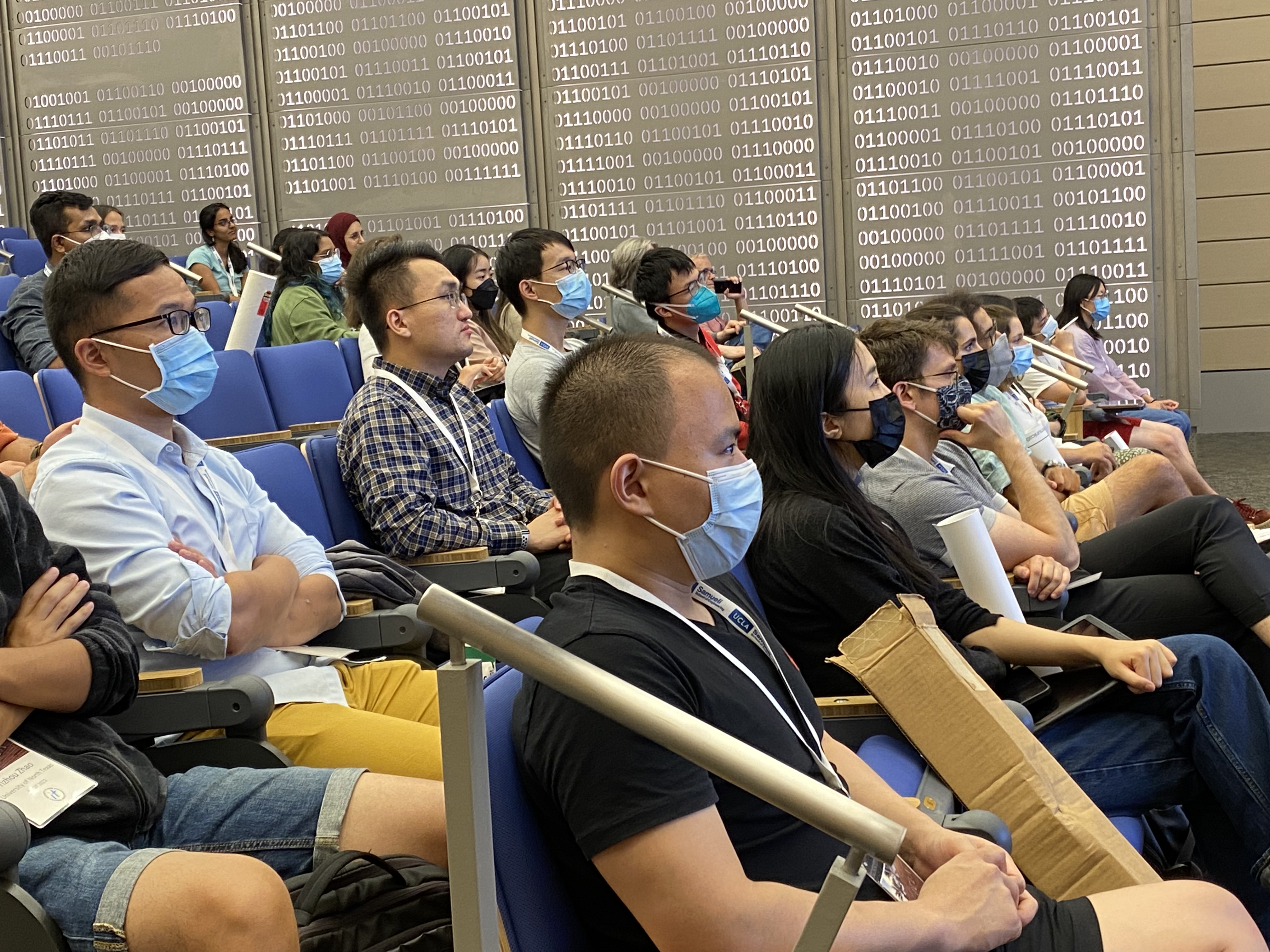
Wednesday began with Shannon Award winner Erdal Arikan explaining his breakthrough discovery of polar codes.The longer form tutorial allowed Professor Arikan to not only explain how polar codes provably achieve capacity but also tell the story of how he discovered these codes as a result of his earlier work on cut-off rate and his understanding of earlier work on sequential decoding. It was a powerful lesson in how research breakthroughs often sit on a deep foundation of earlier results. Then, attendees boarded charter buses to the nearby Getty Center for a picnic lunch surrounded by its beautiful architecture and a scavenger hunt where teams of six scoured the four primary galleries to answer a series of questions about the art with bonus questions about the first three NASIT tutorials.
Thursday featured a morning tutorial by Shannon Award winner Alon Orlitsky who carefully guided attendees through his pioneering work on optimal maximization and sorting and learning distributions without unnecessary assumptions. As with the previous talks, the attendees were engaged and asked plenty of questions that took Professor Orlitsky to the white board where he explained the subtler aspects of how to learn a distribution without assuming a parametric model. Thursday afternoon was packed with two poster sessions where attendees shared their latest work, a fun and insightful presentation “NSF for Beginners” by NSF Program Director Phil Regalia followed by a panel discussion from faculty about how to write an NSF proposal, a panel discussion moderated by Professor Tom Courtade where young faculty spoke about academic careers in information theory, a panel on industry internships and careers in information theory, and pair of talks from Samsung researchers with riveting examples of how information theory is used in industry for statistical signal processing and for future 6G technology. There was a wonderful banquet on the Centennial Terrace of the Luskin Conference Center followed by the thrilling banquet talk by Prof. Eleazar Eskin on how a UCLA team developed and successfully brought to market a new COVID test using DNA sequencing that allows many samples to be sequenced together by placing unique DNA barcodes on each sample.
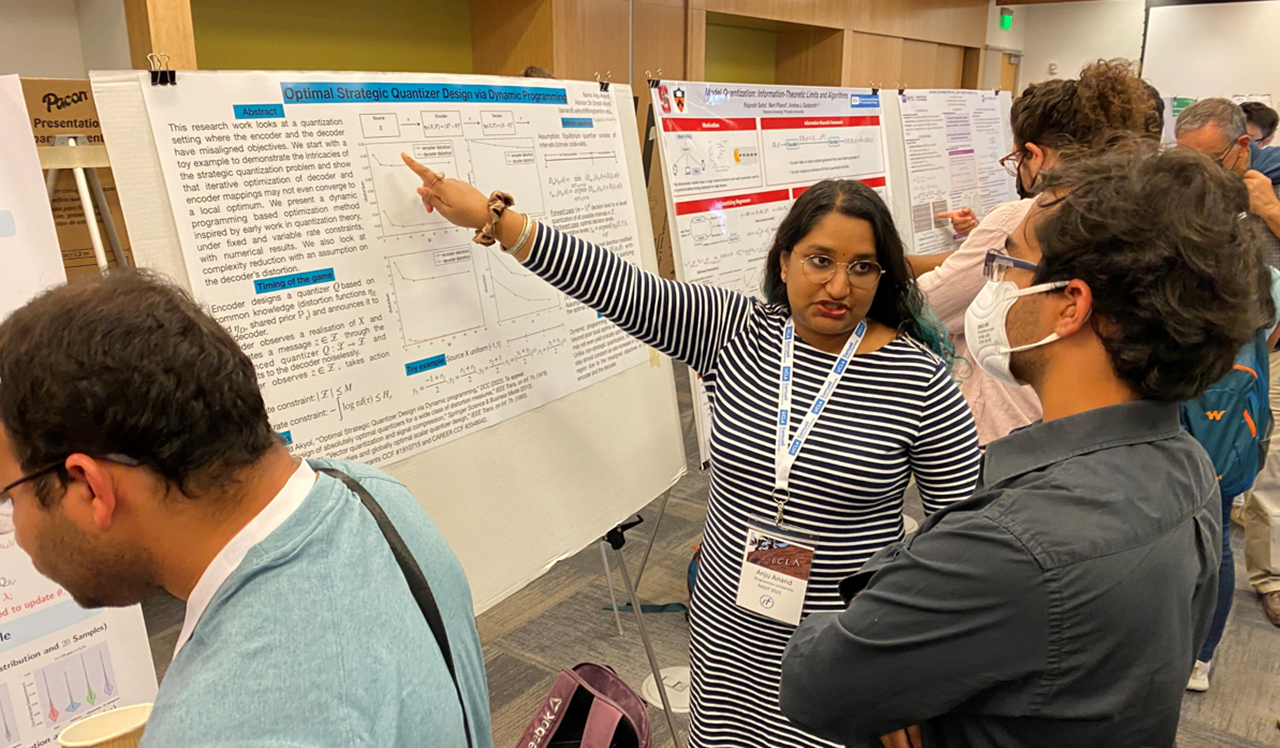
The final day of NASIT 2022 featured to more amazing long-form tutorials. Victoria Kostina talk entitled “Information bottlenecks in emerging distributed systems” united several fields of information theory to address an important open problem with many immediate and important applications with her clear and illuminating presentation providing a rate-distortion theory perspective on communication for computation and control. The culminating presntation of NASIT 2022 was the Padovani Lecture, delivered by Professor Elza Erkip. Her tour de force presentation applied the Asymptotic Equipartiton Property to the problem of graph matching yielding a new family of asymptotic results for this problem. Her results are of critical importance today, when the proliferation of separately anonymous databases can be united to reveal private information.
On Saturday, some attendees stayed in LA one last day to enjoy Universal Studios before heading back to their offices with new knowledge and inspiration to work on their submissions for ISIT 2023. Videos, slides, and handouts of the presentations as well as a photo album of the event are available at https://nasit-2022.seas.ucla.edu/.
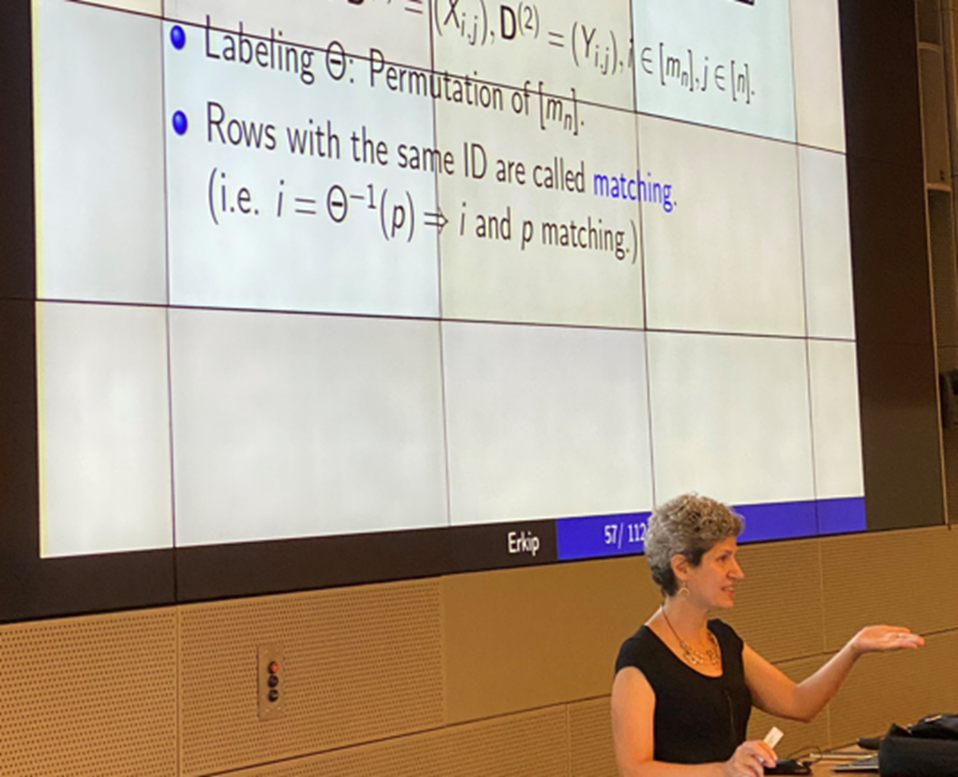
The success of NASIT 2022 was the result of significant effort from numerous professors and students. Critical to the event was the excellent web site created and maintained by UCLA undergraduates Ava Asmani and Anreeta Saseetharran. University of Utah Professor Yu Xiang served as both the Travel Grant Coordinator and International Travel Coordinator. UCLA Professor Greg Pottie organized the Poster Symposium. Berkeley Professor Tom Courtade organized the "Careers in Academia." panel. UCSD Professor Tara Javidi served as Treasurer. UCLA Professor Lara Dolecek handled our COVID-19 policies. Technical Program Chairs Michelle Effros and Gerhard Kramer helped to plan the speakers. Graduate students attending NASIT 2022 stepped in to be Culinary Guides and organize local excursions. We are grateful to the National Science Foundation, IEEE, Qualcomm, Samsung, SK Hynix America, Solidigm, and Watson Adventures for their financial support and also to Samsung for providing excellent speakers Dongwoon Bai and Jyung Hyun Bae.


